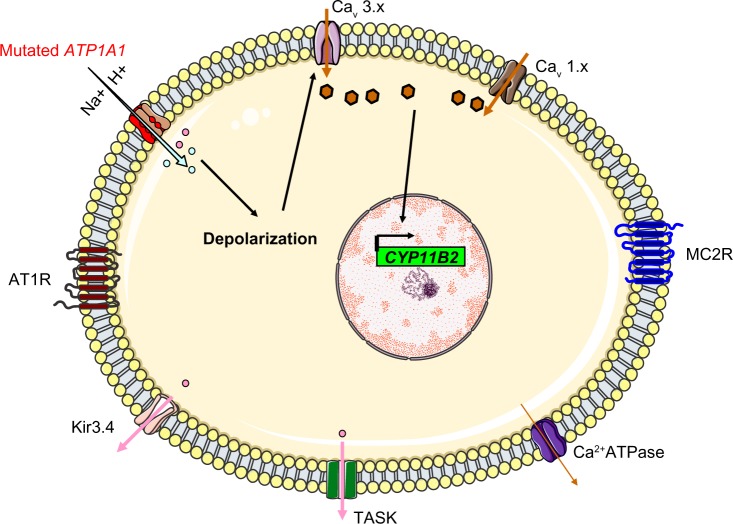Figure 5.
The molecular mechanism thought to underlie hyperaldosteronism in patients with ATP1A1 mutations. The Na+/K+ ATPase changes from actively pumping (three Na+ outwards and two K+ inwards) to passive conduction of an inward current (protons or Na+ ions, depending on the mutation).
Abbreviations: CYP11B2, aldosterone synthase; TASK, TWIK-related acid sensitive K channels; Kir3.4, inwardly rectifying potassium channel Kir3.4; AT1R, type 1 angiotensin II receptor; H+, proton; Cav 3.x, low-voltage activated calcium channels; Cav 1.x, high-voltage activated calcium channels; MC2R, ACTH receptor; ACTH, adrenocorticotropic hormone.

